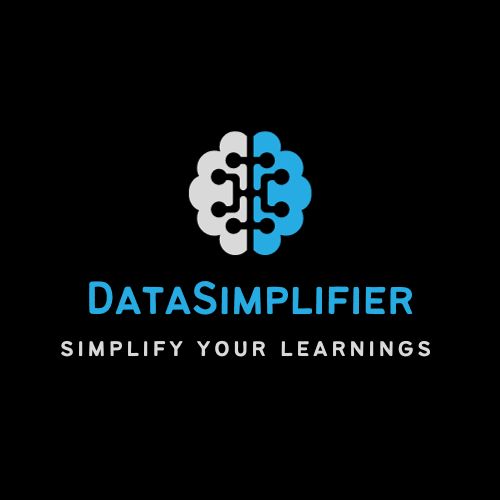Introduction
Are you an Indian student or working professional looking for a way up the ladder in the exciting world of AI, ML, and data analytics? Are you looking to make a great impression at interviews and want to show off your mastery of machine learning algorithms? This ultimate guide to XGBoost, CatBoost, and LightGBM is tailor-made for you, with clear concise information to help you succeed.

We’ll delve into these powerful boosting algorithms – XGBoost, CatBoost, and LightGBM – exploring their strengths, weaknesses, and practical applications. This isn’t just another blog post, it’s your roadmap to success, covering Xgboost catboost & lightgbm github, Xgboost catboost & lightgbm dataset, Xgboost catboost & lightgbm example, Xgboost catboost & lightgbm python, and more, ensuring you’re fully equipped for any data science or machine learning interview. This detailed review will equip you with the key knowledge and real-world experience needed to comfortably converse about these algorithms in job interviews. You’ll not only grasp each algorithm individually but also discover how to pick the right algorithm for the job, which makes you an analyst.
This comprehensive guide to XGBoost, CatBoost, and LightGBM is your go-to reference for mastering the most powerful boosting algorithms. We will cover unique features and the comparison of characteristics of performance of these algorithms. From getting an understanding of the core ideas behind these algorithms to practical examples in Python code and insightful applications, this article is the definitive source for anybody seeking a deeper understanding of XGBoost, CatBoost, and LightGBM. This guide will explain Xgboost catboost & lightgbm github repositories, demonstrate Xgboost catboost & lightgbm dataset usage, and provide Xgboost catboost & lightgbm example implementations in Python, ensuring a thorough grasp of the concepts for any job interview.
Want to stand out from the competition? Mastering these three powerful boosting algorithms, namely XGBoost, CatBoost, and LightGBM, will give you a competitive advantage in the high-demand field of data science and machine learning.

We’ll provide easy-to-understand explanations, real-world examples, and helpful resources to help you understand these algorithms. We will examine the subtleties of each algorithm, compare their strengths and weaknesses, and ensure that you are ready for the battles ahead. This is an extensive guide full of practical examples; understanding XGBoost, CatBoost, and LightGBM will no longer be complicated as you work towards solving intricate problems in data science.
A Deep Dive into XGBoost, CatBoost, and LightGBM
XGBoost, CatBoost, and LightGBM are all part of the family of gradient boosting algorithms. This algorithm is an amalgamation of numerous weak learners for the production of a stronger learner. They are used in a wide variety of tasks ranging from classification to regression and thus are favorites among data scientists.
The primary difference between them lies in their approaches to handling data, which frequently affects their performance. It is essential to know these differences for the right selection of an algorithm for your specific problem. The theoretical foundations, underlying principles, and weaknesses of each approach are discussed.

These algorithms are heavily used in real-world applications for predictive modeling. Knowing their strengths and weaknesses helps data scientists pick the best model for a problem. This is crucial for building accurate models and making effective predictions. The guide also discusses how to implement these algorithms using Python libraries like scikit-learn, ensuring practical insights. We aim to provide clarity on the key concepts and practical implementation details related to XGBoost, CatBoost, and LightGBM to equip you for any interview or career advancement.
Comparison and Practical Application
A deep dive into the practical usage of these algorithms is essential. This involves understanding their hyperparameters, tuning strategies, and model evaluation techniques. We provide practical Python code examples to demonstrate how to train, tune, and evaluate these models using popular libraries. These examples cover a range of scenarios, including classification and regression tasks. This comprehensive guide also includes examples of using Xgboost catboost & lightgbm in Python. The discussion delves into the differences and advantages of using specific algorithms in varying contexts.
The importance of learning to handle different types of datasets while using these algorithms is that it teaches you how to handle numerical, categorical, or mixed datasets. By learning how to effectively pre-process and engineer these datasets, you can optimize the performance of your models. Practical exercises and use cases are provided throughout the guide. This approach allows you to directly apply these algorithms to real-world data science problems and builds a strong foundation of practical application.

We’ve also included resources on Xgboost catboost & lightgbm github, allowing you to explore the implementation details and potentially contribute to these powerful open-source projects. The goal is to provide not just theoretical knowledge but practical experience, which will be vital for your professional development.
Conclusion:
This comprehensive guide to XGBoost, CatBoost, and LightGBM has provided you with a solid foundation in these crucial machine learning algorithms. Now, you’re equipped to confidently discuss these techniques in interviews, showcasing your deep understanding of their strengths and weaknesses. The various application scenarios discussed have hopefully enlightened you on how to utilize these models most effectively.
We believe this to be the most comprehensive and easy-to-understand guide on XGBoost, CatBoost, and LightGBM. If you are eager to learn more or you need additional help, join our massive telegram channels network dedicated to AI, ML, data science, and cybersecurity! These channels are filled with great resources, insightful discussions, and announcements of job openings.
Join our dedicated job notification groups, where we often post data science internships and other opportunities. If you’re interested in gaining free access to our premium Telegram channel with an amazing community for support, then comment your Telegram handle below, and we will send you the invite link. This exclusive community offers you all the exclusive mentorship and interaction opportunities that would help you take your career ahead in this exciting field.
One of our core services extends beyond theoretical knowledge. We offer detailed insights into the world of data science internships, meticulously curated to match the skills and experience of our students and professionals in India.
We are committed to helping you succeed in your data science journey, whether it’s preparing for an interview, embarking on a new career, or enhancing existing skills. If you enjoyed this article, please share it with your friends and colleagues. Your feedback and engagement help us improve our content and continue providing value to the Indian data science community.
This is a great resource to use as a last-minute reference for any interview. You’ve learned valuable concepts. We hope you found this detailed exploration of XGBoost, CatBoost, and LightGBM beneficial for your career goals.
UNIQUE QUESTIONS TO ASK EMPLOYER

